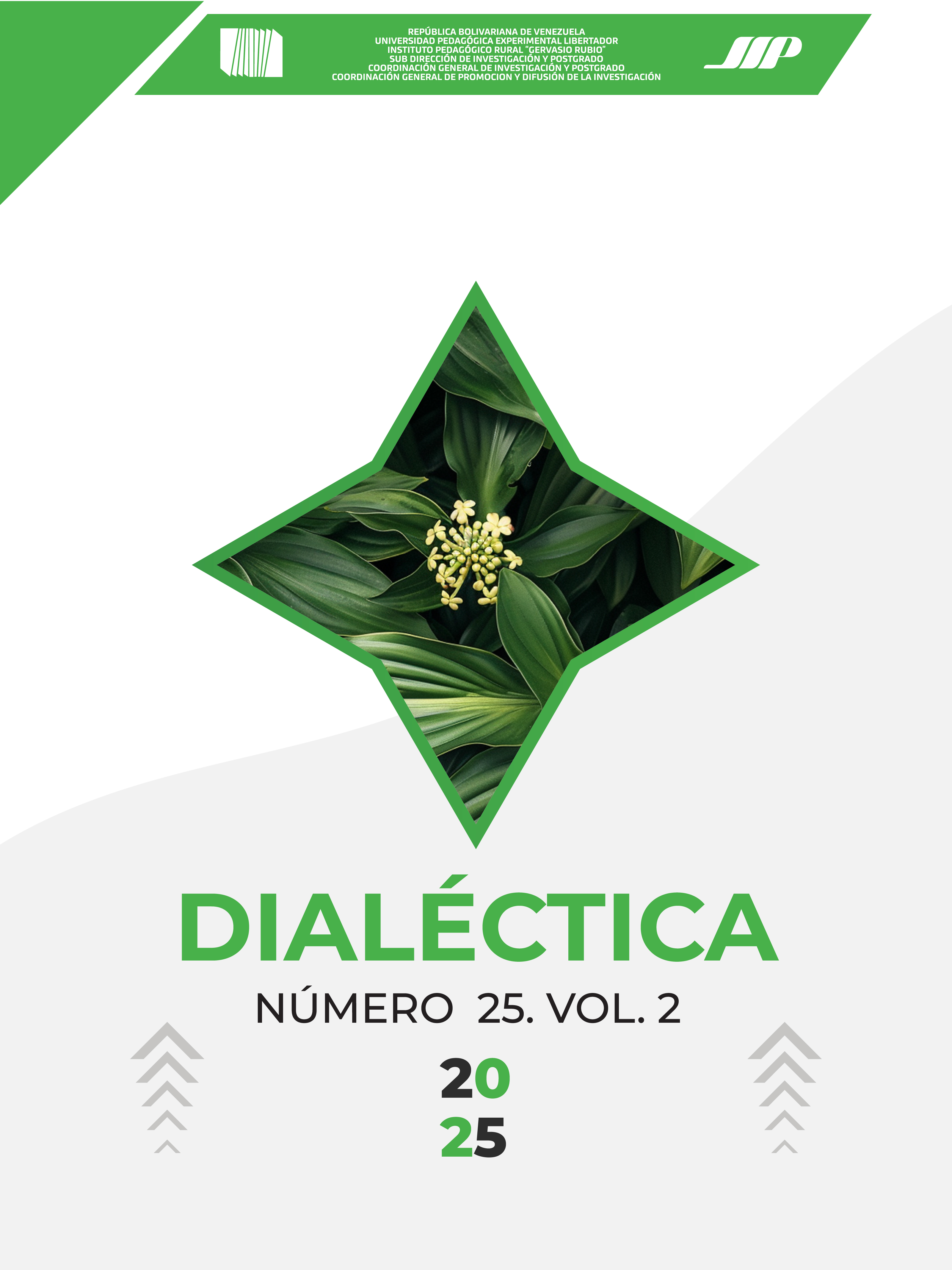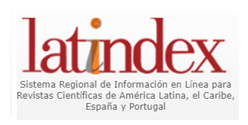BEYOND MEMORIZATION: AN APPROACH TO CRITICAL THINKING FROM THE CLASSROOM
DOI:
https://doi.org/10.56219/dialctica.v2i25.4047Keywords:
Critical thinking, education, metacognition, extrapolation, problem solving, STEM model, memorization, classroomAbstract
The relevance of critical thinking in educational contexts is the subject of this article. Thus, it contrasts with traditional methodologies, which focus on memorization and mechanical processes. Therefore, it is framed within the perspective of Paul et Elder (2010) Miniguide to develop critical thinking. The foundation for Critical Thinking, as well as arising from concerns arising from the analysis of the text by Ritchhart and his team (2014) Making thinking visible, how to promote commitment, understanding and student autonomy. Also, in this article, it is proposed how the development of critical thinking facilitates intellectual autonomy, metacognition and problem-solving in students, for the processes of appropriation of knowledge and visibility of the construct developed from reflection. Therefore, it is suggested to work on active learning strategies supported by the STEM+ model, a global educational movement (2010), for interdisciplinary processes of non-segmented knowledge, and the Universal Design for Learning (UDL) Rose (1990), proposed by the Ministry of National Education (MEN) for public educational institutions in Colombia. All of this is to provide a non-hierarchical learning atmosphere with a human character, where conscientious, reflective, and contrasting analysis is presented, not the mere reproduction of information in a memoristic and meaningless way. Here, reference is made to Freire with his Pedagogy of the Oppressed (1968), where the student ceases to be an inactive receiver to take part in their learning process and the possible transformation of realities through problem-solving and situations in the classroom for the extrapolation of knowledge and the applicability of critical thinking. In this way, the active subject of knowledge learns through reflection to participate in a dialogical process in the collective construction of new knowledge, while developing an analysis of social realities to become an agent of change in the pursuit of deliberative democracies.
Downloads
References
Beltrán Véliz, J. C., Navarro Aburto, B., y Peña Troncoso, S. (2018). Prácticas que obstaculizan los procesos de transposición didáctica en escuelas asentadas en contextos vulnerables: Desafíos para una transposición didáctica contextualizada. Revista Educación, 42(2), 335-355. https://doi.org/10.15517/revedu.v42i2.27571 DOI: https://doi.org/10.15517/revedu.v42i2.27571
Bloom, B. S. (Ed.). (1956). Taxonomy of educational objectives: The classification of educational goals. Handbook I: Cognitive domain. Longmans, Green.
Bybee, R. W. (2010). Advancing STEM education: A 2020 vision [Avanzando en la educación STEM: Una visión para 2020]. Technology and Engineering Teacher, 70(1), 30–35.
Castells, M. (1996). La era de la información: Economía, sociedad y cultura. Volumen I: La sociedad red. Siglo XXI Editores.
Eduteka. (2015). La Taxonomía de Bloom y sus actualizaciones. http//:www.eduteka.org/taxonomiaBloomCuadro.php3
Ennis, J. (2011). El profesorado como mediador cognitivo y promotor de un aprendizaje significativo. Revista Educación, 43(2), 603-614. http://dx.doi.org/10.15517/revedu.v43i2.37269 DOI: https://doi.org/10.15517/revedu.v43i2.37269
Eyler, J., & Giles, D. E., Jr. (1999). Where's the learning in service-learning? [¿Dónde está el aprendizaje en el aprendizaje-servicio?]. Jossey-Bass.
Freire, P. (1968). Pedagogía del oprimido. México DF. Fondo de cultura económico de México.
Gallagher, S. (2010). The future of learning: Education in the age of digital culture [El futuro del aprendizaje: La educación en la era de la cultura digital]. Palgrave Macmillan.
Krathwohl, D. R. (2001). A revision of Bloom’s taxonomy: An overview. Theory into Practice, 41(4), 212–218. https://doi.org/10.1207/s15430421tip4104_2 DOI: https://doi.org/10.1207/s15430421tip4104_2
Levinas, E. (1991). Totalidad e infinito: Ensayo sobre la exterioridad (A. García, Trad.). Salamanca: Sígueme. (Obra original publicada en 1961)
Matos Ceballos, J. J., Tejera Concepción, J. F., y Terry Rodríguez, C. E. (2018). Estrategia didáctica para la formación del valor responsabilidad. Sinéctica, Revista Electrónica de Educación, (50), 01-18. https://doi.org/10.31391/S2007-7033(2018)0050-013 DOI: https://doi.org/10.31391/S2007-7033(2018)0050-013
Perkins, D. (1999). La enseñanza para la comprensión. Barcelona España. Paidós.
Paul, R., Elder, L. (2005). Estándares de competencia para el pensamiento Crítico. Fundación para el pensamiento crítico. https://www.criticalthinking.org/resources/PDF/SPComp_Standards.pdf
Paul, R., y Elder, L. (2010). Mini guía para el pensamiento crítico; conceptos y herramientas. Buenos Aires Argentina: Paidós.
Rose, D. H., & Meyer, A. (2002). Teaching every student in the digital age: Universal design for learning [Enseñando a cada estudiante en la era digital: Diseño universal para el aprendizaje]. ASCD.
Ravitch, D. (2010). La muerte y vida de la gran escuela estadounidense: Cómo salvar la educación pública (J. Pérez, Trad.). Gedisa. (Obra original publicada en 2010)
Ritchhart, R. (2014). Hacer visible el pensamiento: Cómo promover el compromiso, la comprensión y la autonomía de Los estudiantes. Buenos Aires Argentina:
Seidel, J. V. (1998). Qualitative data analysis [Análisis cualitativo de datos]. The Ethnograph v5 Manual. Qualis Research.
Torres Cruz, D. L., Fonseca Villamil, W. P., y Pineda Jaimes, B. N. (2017). Las vivencias como estrategia de refuerzo del pensamiento crítico en educación rural. Revista Praxis & Saber,
(17), 201-224. https://doi.org/10.19053/22160159.v8.n17.2018.7207 DOI: https://doi.org/10.19053/22160159.v8.n17.2018.7207
Wiske, M. S. (Ed.). (1997). Teaching for understanding: Linking research with practice [Enseñanza para la comprensión: Vinculando la investigación con la práctica]. Jossey-Bass Publishers.
Velázquez Tejeda, M. E. (2017). Estrategia didáctica para desarrollar el pensamiento crítico. REICE-Revista Iberoamericana sobre Calidad, Eficacia y Cambio en Educación, 15(2), 53-73. https://revistas.uam.es/index.php/reice/article/view/7019 DOI: https://doi.org/10.15366/reice2017.15.2.003
Vargas, J. J. (2013). Apropiación de la realidad aumentada como apoyo a la enseñanza de las ciencias naturales en la educación Básica primaria. Revista Boletín Redipe, 7(12), 144-157. https://dialnet.unirioja.es/servlet/articulo?codigo=6728828
Downloads
Published
How to Cite
Issue
Section
License

This work is licensed under a Creative Commons Attribution-NonCommercial-ShareAlike 4.0 International License.
La revista Dialéctica conserva los derechos patrimoniales (copyright) de las obras publicadas, que favorece y permite la reutilización de los mismos bajo la licencia Creative Commons Atribución-NoComercial-CompartirIgual 4.0 , por lo cual se pueden copiar, usar, difundir, transmitir y exponer públicamente, siempre que se cite la autoría y fuente original de su publicación (revista, editorial, URL y DOI de la obra), no se usen para fines comerciales u onerosos y se mencione la existencia y especificaciones de esta licencia de uso. Si remezcla, transforma o crea a partir del material, debe distribuir su contribución bajo la misma licencia del original.











